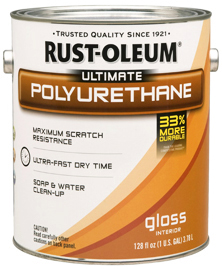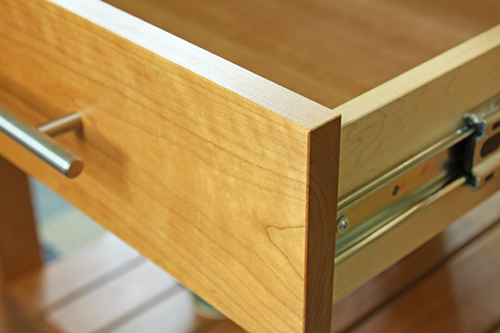
Over the years, I’ve developed a love/hate relationship with polyurethane. Even though many readers tell us that it’s their favorite finish by quite a stretch, generally speaking it just isn’t mine.
On the plus side, polyurethane is pretty darn durable. We have two teenage kids who are hard on furniture. My wife and I are constantly hounding them to use coasters under sweaty cans of diet cola. Book bags and musical instrument cases get tossed on the kitchen table when they get home from school–and those metal hinge knuckles, zippers and buckles are anything but kind to a tabletop finish. Damp towels sometimes get hung over the backs of wooden chairs. You get the picture. If you’ve got kids or grandkids, you need a tough-as-nails wood finish if you want it to survive the long haul.
But the downsides to poly can tip the scales the other direction for me. Oil-based poly takes forever to cure, and when you’re on magazine deadlines, that just doesn’t work. It smells awful, too. You might think, well so does lacquer and shellac, but at least both of those options flash off quickly. Not poly. It seems to stink up the finishing area for days.
Poly makes my brushes crunchy, no matter how diligently I clean them, and it can be difficult to lay down smoothly unless you’re really attentive to brush marks.
Even typical waterbased poly has a couple of drawbacks: it smells like ammonia and it can make the wood look washed out when it cures. But at least it dries more quickly than it’s oily cousin.
Well, I just wrapped up a new project for our upcoming October issue of the print magazine, and time was on my side for a change. In spite of my grousing, I decided to give poly another try (durability being my biggest objective for this project), but this go-around I tried something new: Rust-Oleum’s Ultimate Polyurethane in a satin sheen. Maybe you’ve seen it on the shelves of your local hardware store or big box home center. You might even recall an eZine interview a while ago in which I interviewed the folks at Rust-Oleum about this product and the company’s other new Wood Care finishes, or a blog post from one of their recent visits to the office. So, time to give it a try for myself.
And the verdict, now that the project is done: I’m very impressed.
Ultimate Polyurethane is waterbased, but I was pleasantly surprised when I first popped the lid. The milky liquid has almost no discernible smell. I applied it in a small room of our basement, and the absence of oily solvents or ammonia was a welcomed and pleasant benefit. It brushed out smoothly while wet and proceeded to flatten out even more as it dried–another big plus! And, true to the marketing suggestion on the front of the can, it dried quickly. The company claims “ultra fast,” which for me translated to about two hours until the finish was dry to the touch. Sure beats the snail’s pace of oil-based poly.
The majority of this new project is made of cherry. So, in order to avoid potential blotching that can turn unassuming wood grain into a distracting case of the “wood hives,” I started with a wash coat of dewaxed shellac to seal the wood. Then it occurred to me that that potentially may have been a bad start to a project that would be topcoated with a waterbased finish. Shellac isn’t very resistant to water. But, my fears were unfounded, thankfully. The varnish cured beautifully and seemed to have no negative impact on the shellac underneath it. While I will say I miss some of the amber tone that an oil-based finish can impart to cherry, this Rust-Oleum product doesn’t drain the wood’s natural color dry. And the flat sheen is perfect for my application. It doesn’t look at all “plasticized.” The brush bristles cleaned up to a supple dry with soap and water.
By now you can guess that I’ll be using this new breed of poly again. I can’t attest to it being “33 percent more durable than the leading competitive product” just yet, as my kid’s haven’t given it their own style of acid testing. But if it turns out to be as tough as it is pleasant and easy to apply, this just might be a new favorite general-purpose finish of mine. So far, I’m not seeing a down side to it.
I encourage you to give Rust-Oleum’s new poly a try, and then, please post a comment to tell us all what you think of it. Hopefully, your results will be as good as mine.
Catch you in the shop,
Chris Marshall, Field Editor






